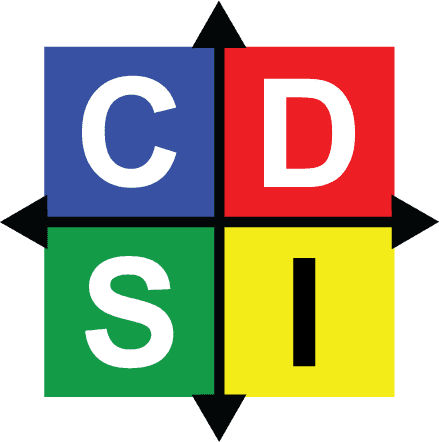By Bo Hanson – 4x Olympian, Coaching Consultant & Director of Athlete Assessments
As a coach, there are some models that it is vital you understand to get the best out of your athletes. In this article we will discuss these critical coaching models and provide links to other articles that you can use to gain greater insight into these models. These coaching models aren’t very complex to get your head around, but they are important if you want to get to understand yourself and your athletes better, and ultimately improve performance.
You can read the article, or watch the video, as Bo speaks about Important Models Coaches should understand here!
DISC Model
The DISC Model is the foundation of the AthleteDISC, CoachDISC and Sports ManagerDISC Behavioral Profiles and they all measure observable (external) behavior within the sporting environment. Recognizing that personality is relatively fixed (we can’t change our personality), but behavior is flexible (we can change what we do and how we act), is a central factor to the use of these profiles. If you are new to the DISC Model, the diagram below shows DISC as a four-quadrant model, and its associated core behaviors (Dominance, Influence, Steadiness and Conscientious).

Like all people, athletes and coaches may behave differently in different situations and environments. For example, a common core factor impacting behavior is the level of pressure an athlete or coach is feeling. The same is true for any professional, including those working in the sports industry. By studying how individuals behave differently, we begin to understand the types of behavior creating poor or great performances. Besides understanding your own DISC style, you can also learn how to identify another person’s DISC behavioral style. Once the behavior profile is understood, it is possible to modify and adapt behaviors to improve performance.
The AthleteDISC, CoachDISC and Sports ManagerDISC profiling system creates in-depth personalized reports identifying an individual’s core behavior style. The report identifies ways the person can apply their behavior style’s strengths, or modify their style’s limitations.
Emotional Intelligence
 Emotional Intelligence is used to a large extent in leadership and business. In a nutshell, Emotional Intelligence is the ability to identify, assess and manage the emotions of you, of others, and of groups. The key to emotional intelligence is the ability to control your emotions and create peak performance on demand. Essentially emotional intelligence is defined as:
Emotional Intelligence is used to a large extent in leadership and business. In a nutshell, Emotional Intelligence is the ability to identify, assess and manage the emotions of you, of others, and of groups. The key to emotional intelligence is the ability to control your emotions and create peak performance on demand. Essentially emotional intelligence is defined as:
- The ability to recognize your own emotional state, that is, how you are feeling.
- Sense the emotions in others.
- Knowing how to motivate yourself to create your best performance.
- Build productive relationships with others.
While the term emotional intelligence was used by many others, it became most recognized through the work of Daniel Goleman in his bestselling book “Emotional Intelligence: Why It Can Matter More Than IQ”.
Fundamental to understanding emotional intelligence is knowing that emotional intelligence is a competency based framework. This means, each of us already has a level of skill in emotional intelligence, it is just the degree of its development. If we understand that emotional intelligence is a skill, it can be taught, learnt and continually developed.
Self-awareness is the cornerstone of the development of emotional intelligence. It is a function of the degree to which you understand yourself. Self-awareness encompasses knowledge of your strengths, limitations and how your emotions and behaviors create your sporting results.
Learning Styles
This can be a confusing model for coaches, as we are not talking about visual, auditory and kinesthetic preferred modalities. A learning style is a preferred way of taking in and processing information in order to develop knowledge and skill. The internationally regarded experts in this field are Honey and Mumford from the UK. Their model includes four different learning styles (or stages) with each person having their own preference of a combination of the four different styles.

Their theory suggests there are four stages in learning:
- Activist
- Reflector
- Theorist and
- Pragmatist
Each of these stages follows on from another. Whilst we all have a preferred learning style, an individual does not just learn in one way, but rather we have a combination of learning styles. Each of us, prefer one, two or three of these styles more or less than the other styles. Hence, the style we prefer the most is our learning style preference. Honey and Mumford’s research has shown, by understanding your own learning style preferences and by developing your non-preferred learning styles, you can effectively learn more efficiently and effectively.
When coaching our athletes, we can therefore strategically create a “learning journey” for our athletes by leading them through each style of the four stage cycle. Creating a holistic learning experience means appealing not only to a learner’s preferred style, but importantly enabling the learner to journey beyond their preferences into the other learning styles.
Stages of Team Development
Every High Performance Team at least goes through the four main stages of Tuckerman’s Stages of Team Development. Tuckerman believed (as is a common belief today) these stages were inevitable for a team to grow to a point where they could function together effectively and deliver high quality results.
The five stages of team development are:
- Stage 1: Forming
- Stage 2: Storming
- Stage 3: Norming
- Stage 4: Performing
- Stage 5: Adjourning

The “forming” stage takes place when the team first meets each other. They are not yet training or working together, it is the very beginning. They are, effectively, “feeling each other out” and finding their way around how they might work together. As the team begins to work / train / play / compete together, they move into the “storming” stage. In this stage, the team members compete with each other for status and for acceptance of their ideas.
When the team moves into the “norming” stage, they are beginning to be more effective as a team. They are no longer focused on their individual goals, but rather are focused on developing a way of working together for the best results of the team. In the “performing” stage, teams are functioning at a very high level. The focus is on reaching the goal as a group. Not every team makes it to this level of team growth; some teams stop at Stage 3: Norming.
It is important to remember that every team – sporting or otherwise – will follow these stages of team development. It is the job of the coach or team leader to help see the team through these stages; to bring them to the point where they are working as effectively as possible toward a common goal.
Where to from here?
We hope you found this article valuable. These coaching models are critical for coaches to understand the people side of sport. With this understanding coaches are better served to help themselves and their athletes achieve peak performance.
If you would like more information on the models mentioned, we recommend our dedicated articles:
- The Importance of DISC Profiling in Sport
- Emotional Intelligence in Sport
- Athlete Learning Styles for Sports Coaches
- Stages of Team Development
At Athlete Assessments, we’re here to provide you with excellence in service and here to help you be your best. If there is anything we can assist you with, please Contact Us.




